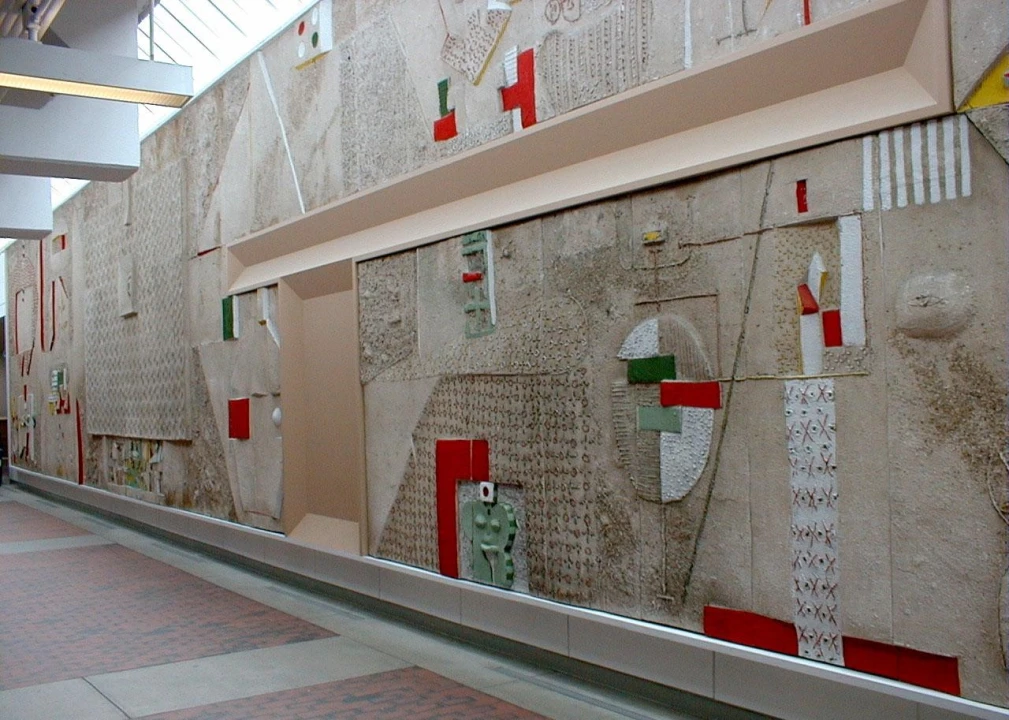Born in Orani (Nuoro) in 1911, sixth of ten children, Nivola experienced in his childhood the difficult life of a poor family in rural Sardinia in the early twentieth century.
From a young age, in 1926, he was hired as an apprentice by the painter Mario Delitala for the decoration of the Aula Magna of the University of Sassari. The departure from his native town is a traumatic event that, taking him away from the community, makes him feel uprooted: it is only the first of a series of detachments destined to mark the phases of his existential and artistic history.
At the end of 1931, thanks to a grant from the Council of Economics of Nuoro, he moved to Monza (Lombardy) to attend the Istituto Superiore per le Industrie Artistiche (ISIA). Here he enrolled in the Pictorial Decoration section and then in the Advertising Graphics section, but sculpture was the field in which he excelled.
Despite the perceived lack of theoretical foundations in his teaching, the years spent at ISIA are fundamental to his training. The multiplication of figurative stimuli, the contact with high-profile teachers (architects Edoardo Persico and Giuseppe Pagano, graphic designer Marcello Nizzoli but also painter Pio Semeghini, and sculptor Arturo Martini) and the proximity to a fervent environment such as the Milanese one, contribute to accelerate the pace of his stylistic research and lead him to confront the issue, destined to become a priority for him, of art applied to architecture.
He is one of the few sculptors who have added a new technique to the existing ones: sand-casting, with which he has been performing his most committed works since the 1950s. It is a relief obtained with a simple procedure: the shape is modelled in negative on the sand; on it is poured a casting of plaster or cement, which dries and gives life to the final relief.
In 1938 he married Ruth Guggenheim, a German classmate of Jewish origin, and was forced by anti-Semitic persecution to leave Italy, taking refuge first in Paris, where he worked as a draftsman, and then like many other European intellectuals and artists, after the Nazi invasion of France, in New York (Costantino was anti-fascist and in close contact with the Rosselli brothers' Justice and Freedom movement). In New York, Costantino and Ruth they found a home forever, a community of friends among the most important intellectuals and artists of their generation (from Calder to Saul Steinberg and Le Corbusier with whom Nivola shared the studio for a period) and became part of the cultural élite.
One morning, outside their house in East Hampton, Long Island, they found a red bicycle left as a gift for their little son Pietro, with a note on it that said "For Pietro from Jackson": "Jackson" was Pollock who lived a few minutes away with his wife Lee Krasner and who regularly visited their house. In New York, Nivola created most of his famous sculptures and also 21 important public art projects (including the decoration for Olivetti's Fifth Avenue showroom) in collaboration with architects and urban planners, distributed among the five city boroughs and 17 of which are still in their original destination.
The Arthur A. Houghton Jr. Gallery at the Cooper Union University, curated by Steven Hillyer (director of the Irwin S. Chanin School of Architecture Archive at The Cooper Union) and by architect Roger Broome, has just finished presenting the exhibition "Nivola in New York: Figure in the Field" which, through maquettes, sculptures, original drawings, photographs and other objects, tells, for the first time, the story of these projects that Nivola realized over forty years for New York.




